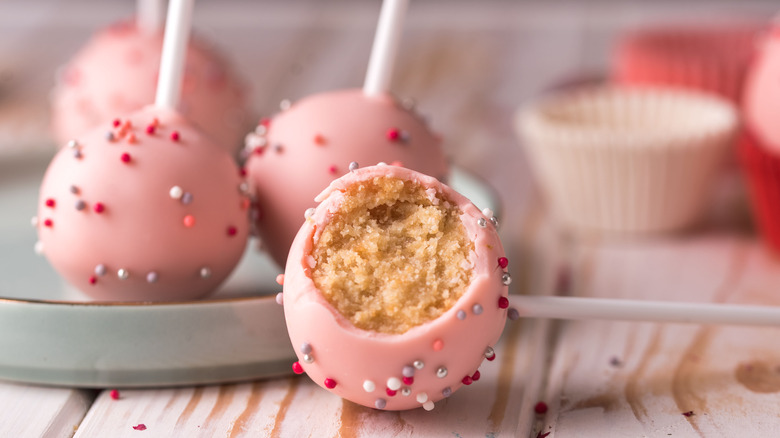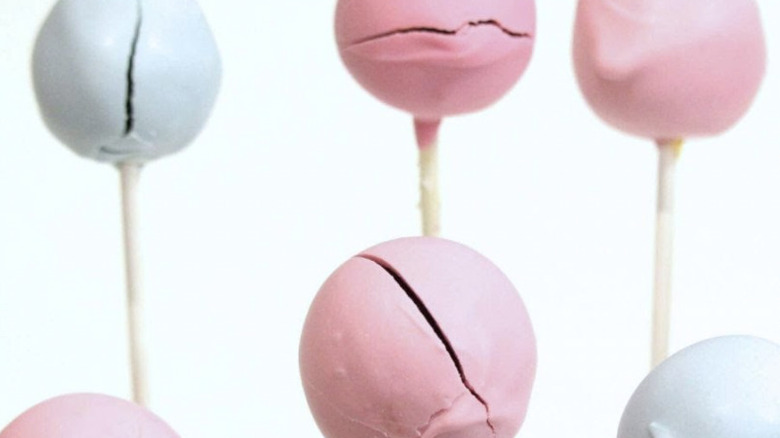Cracked Cake Pops? Here's The Mistake You're Making
Even though cake pops aren't guaranteed to turn your frown upside down, you'd be hard-pressed to find someone nibbling on a cake pop who wasn't happy about it. Cake pops are essentially portable pieces of cake, covered in a candy shell and popped onto a stick. Just like most things in life, nothing is perfect, and often a cake pop will have a small imperfection — some may not be perfectly round, while others might look cracked. There are some simple steps to get rounder cake pops as well as tips for eliminating the cracks, giving you a smoother, nicer final result.
While a crack in your cake pop won't make a difference in the taste, it can be aesthetically unappealing, especially if you are serving cake pops for a party or special event. The crack typically appears after the cake pop has been assembled and dipped into the candy-coating mixture. The most unfortunate part is that it always happens right at the end of the process, meaning there's not much that can be done. Some bakers use creative baking and decorating hacks, like adding fondant decorations strategically around the cracked bits.
What causes the dreaded cake pop crack?
Luckily, there are steps that can be taken to prevent your homemade cake pops from cracking. The main reason the cake pops crack after they've been coated is a matter of temperature. If the cake is too cold and the icing is too warm when it is coated, the shell will crack from the difference in temperature. We know hot objects typically expand while cold objects shrink in size, so it makes sense that the spherical treat could split once it's settled and cooled down. The trick is to make sure that both the cake and the sweet outer layer (which is usually made from icing, melted chocolate, or candy melts) are as close to the same temperature as possible before coating.
You can use a thermometer to monitor the temperatures, but an easier trick is to let the cake pops come to room temperature before covering them in candy or chocolate. After the cake is rolled into a ball, it needs time to harden in either the fridge or freezer. Likewise, the outer coating typically needs to be heated up enough to melt, but should come off the heat to cool down a bit before it seizes up. Even with all the best intentions, sometimes cake pops can still crack. In that case, either save the not-so-picture-perfect ones for yourself or simply hide the cracked one in between the others — we doubt anyone will even notice.

